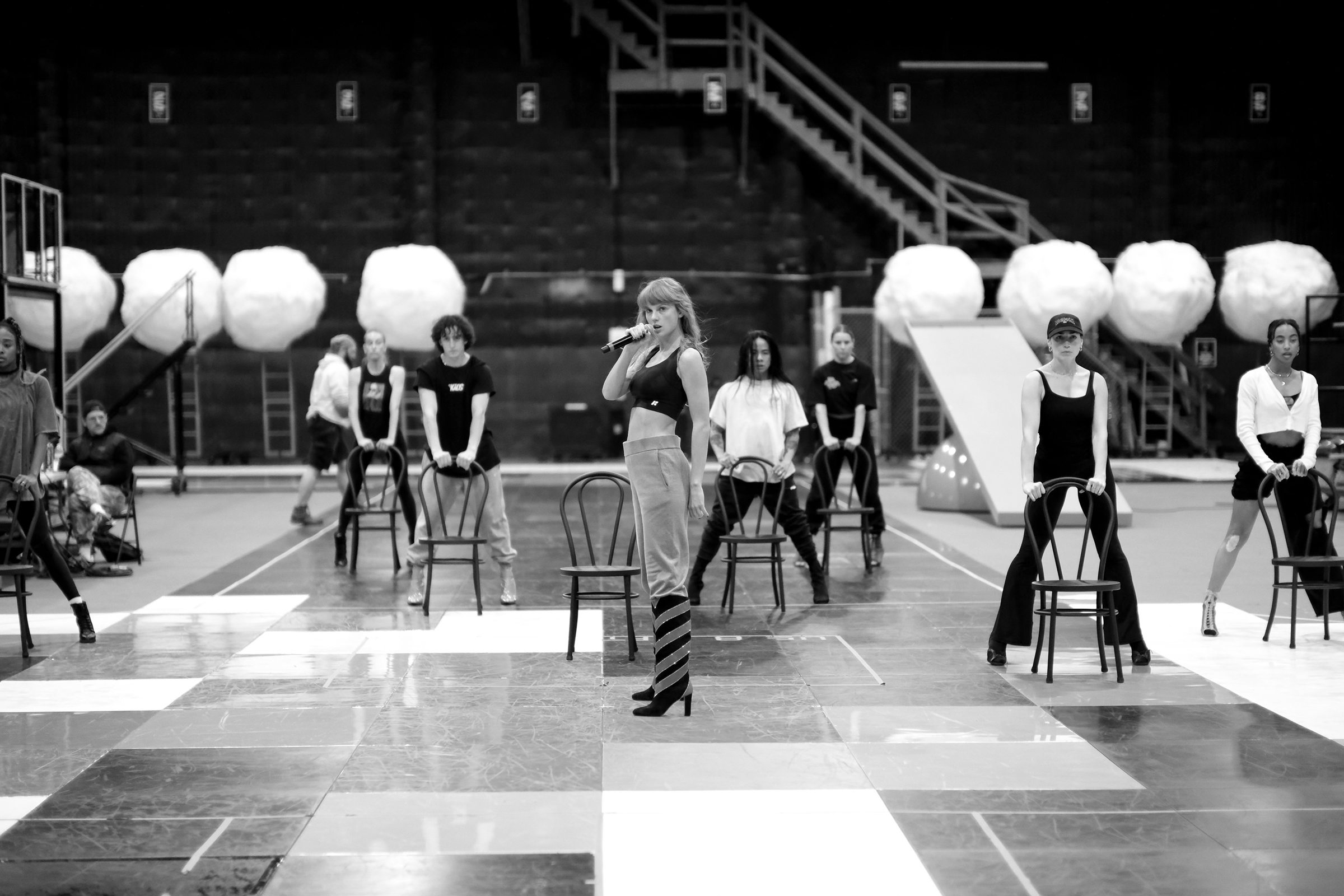Taylor Swift is telling me a story, and when Taylor Swift tells you a story, you listen, because you know it’s going to be good—not only because she’s had an extraordinary life, but because she’s an extraordinary storyteller. This one is about a time she got her heart broken, although not in the way you might expect.
She was 17, she says, and she had booked the biggest opportunity of her life so far—a highly coveted slot opening for country superstar Kenny Chesney on tour. “This was going to change my career,” she remembers. “I was so excited.” But a couple weeks later, Swift arrived home to find her mother Andrea sitting on the front steps of their house. “She was weeping,” Swift says. “Her head was in her hands as if there had been a family emergency.” Through sobs, Andrea told her daughter that Chesney’s tour had been sponsored by a beer company. Taylor was too young to join. “I was devastated,” Swift says.
But some months later, at Swift’s 18th birthday party, she saw Chesney’s promoter. He handed her a card from Chesney that read, as Swift recalls, “I’m sorry that you couldn’t come on the tour, so I wanted to make it up to you.” With the note was a check. “It was for more money than I’d ever seen in my life,” Swift says. “I was able to pay my band bonuses. I was able to pay for my tour buses. I was able to fuel my dreams.”
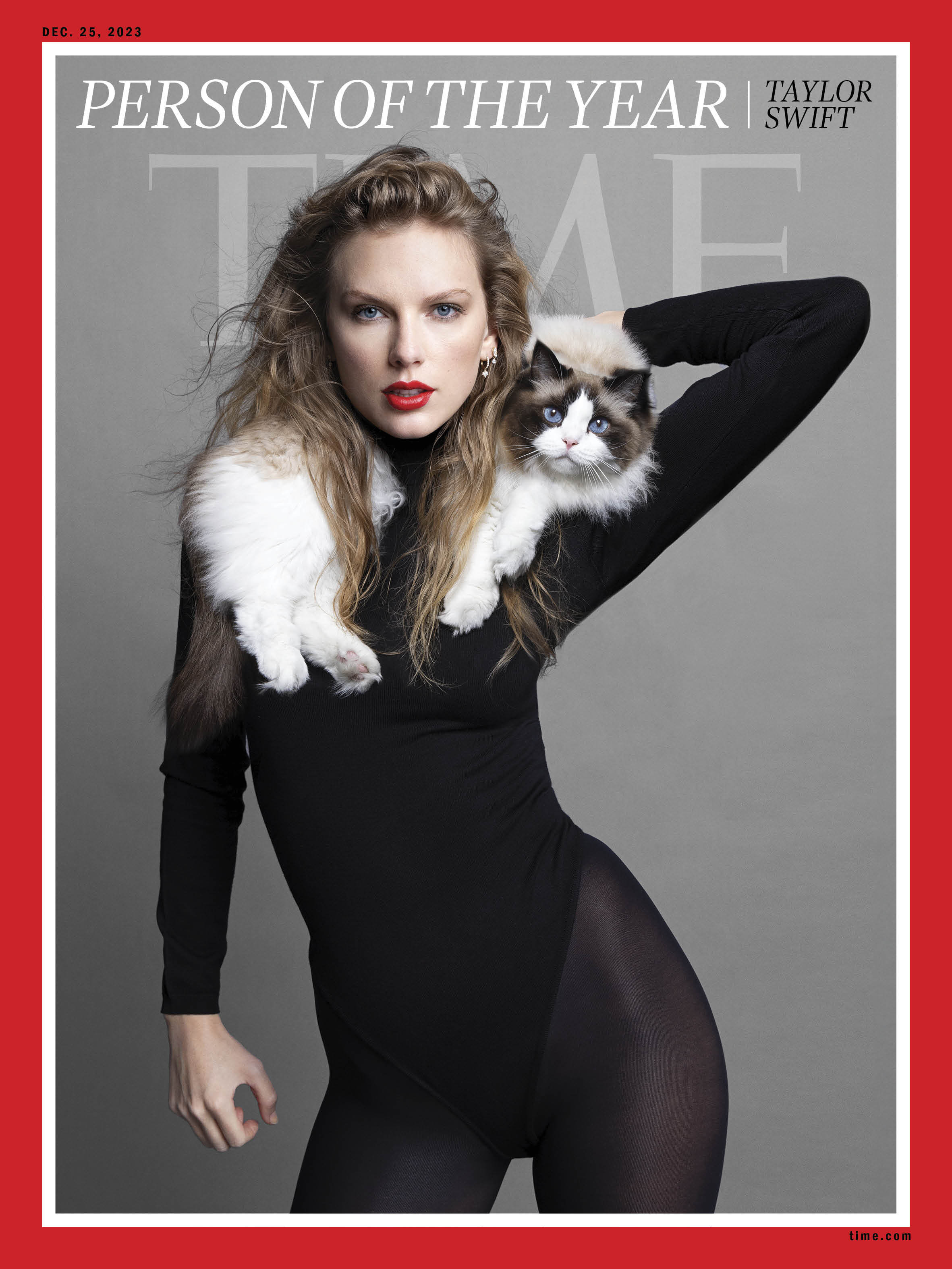
Listening to Swift share this, on a clear fall afternoon in her New York City apartment, I’m struck by how satisfying the story is. There are high stakes at the outset; there are details, vivid and sensory; there’s a twist that flips the action on its head; and there’s a happy ending for its hero. It takes her only about 30 seconds to recount this, but those 30 seconds contain an entire narrative world.
Buy the Taylor Swift Person of the Year issue here
I’m not surprised. Swift has a preternatural skill for finding the story. Her anecdote about Chesney symbolizes a larger narrative in Swift’s life, one about redemption—where our protagonist discovers new happiness not despite challenges, but because of them. Swift, as we’ll discuss, took a few hits to get here. “I’ve been raised up and down the flagpole of public opinion so many times in the last 20 years,” she says as we tuck into a cozy den off the kitchen to talk, and she kicks off her shoes and curls up onto the sofa. “I’ve been given a tiara, then had it taken away.” She is seemingly unguarded in conversation, reflective about both where she’s been and where she finds herself now. After all, while she’s long been one of the biggest entertainers in the world, this year is different. “It feels like the breakthrough moment of my career, happening at 33,” she says. “And for the first time in my life, I was mentally tough enough to take what comes with that.” This is her story—even if she’s now so high that it’s hard to believe she was ever low.
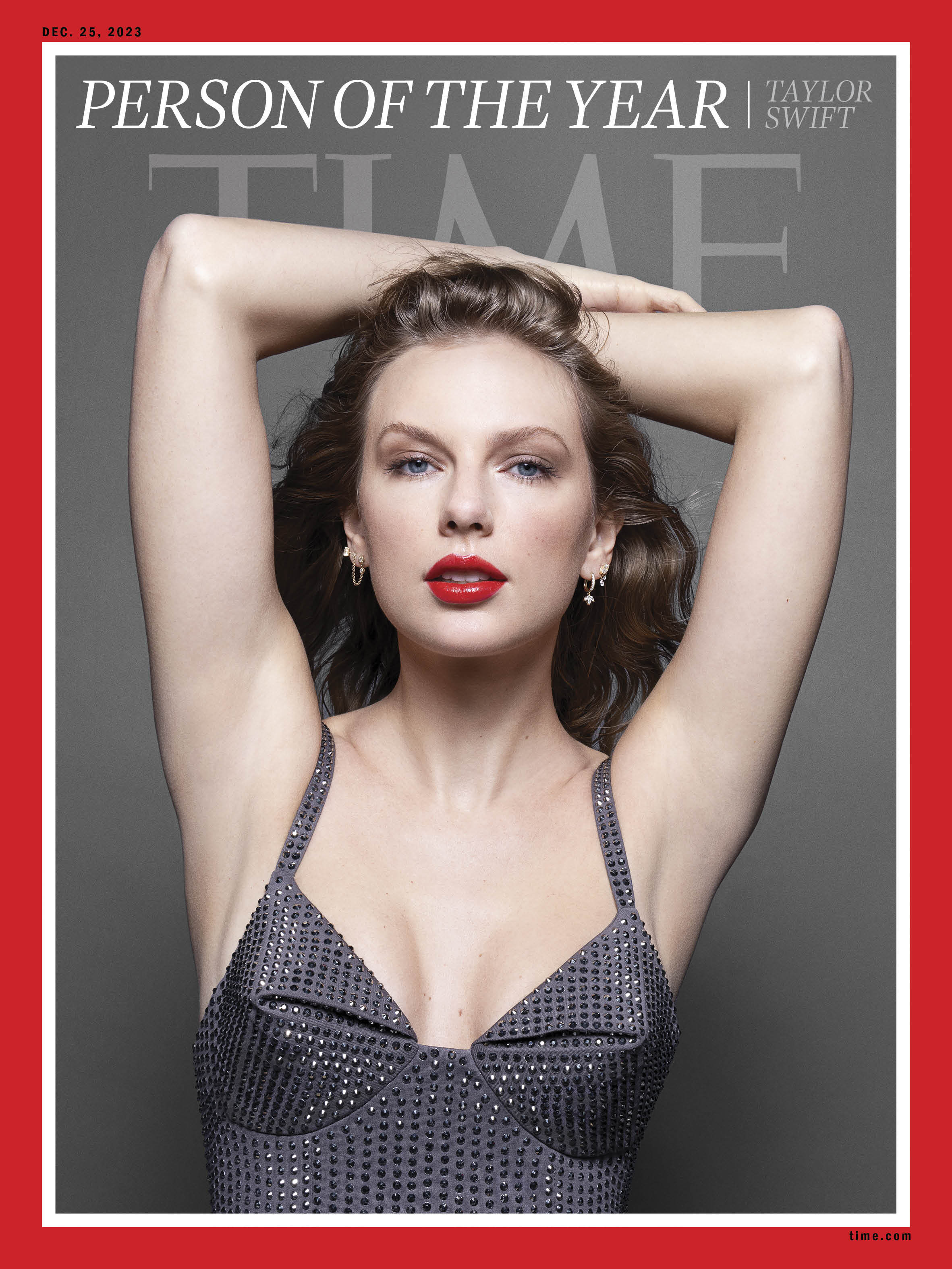
Swift’s accomplishments as an artist—culturally, critically, and commercially—are so legion that to recount them seems almost beside the point. As a pop star, she sits in rarefied company, alongside Elvis Presley, Michael Jackson, and Madonna; as a songwriter, she has been compared to Bob Dylan, Paul McCartney, and Joni Mitchell. As a businesswoman, she has built an empire worth, by some estimates, over $1 billion. And as a celebrity—who by dint of being a woman is scrutinized for everything from whom she dates to what she wears—she has long commanded constant attention and knows how to use it. (“I don’t give Taylor advice about being famous,” Stevie Nicks tells me. “She doesn’t need it.”) But this year, something shifted. To discuss her movements felt like discussing politics or the weather—a language spoken so widely it needed no context. She became the main character of the world.
If you’re skeptical, consider it: How many conversations did you have about Taylor Swift this year? How many times did you see a photo of her while scrolling on your phone? Were you one of the people who made a pilgrimage to a city where she played? Did you buy a ticket to her concert film? Did you double-tap an Instagram post, or laugh at a tweet, or click on a headline about her? Did you find yourself humming “Cruel Summer” while waiting in line at the grocery store? Did a friend confess that they watched clips of the Eras Tour night after night on TikTok? Or did you?
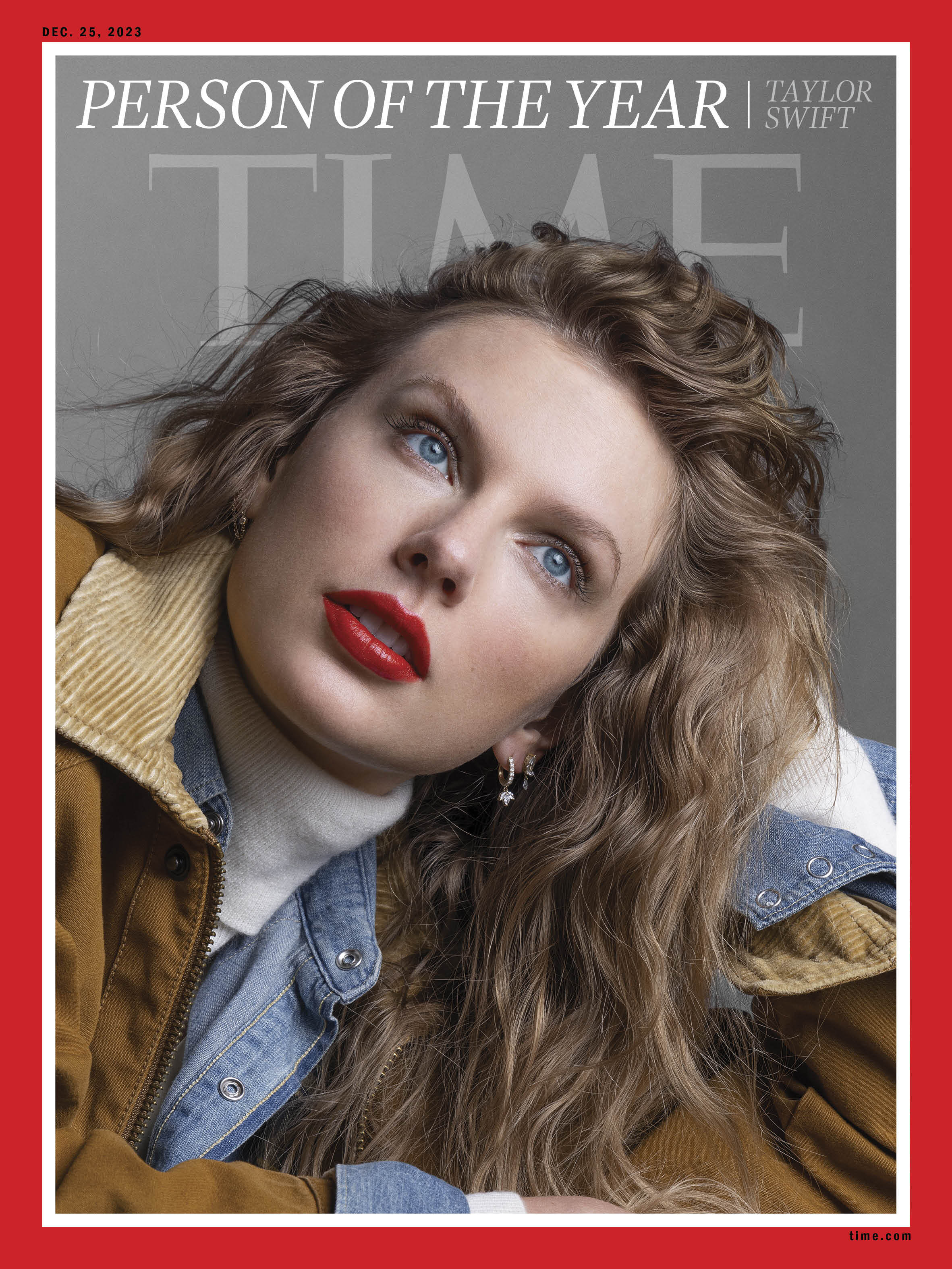
Her epic career-retrospective tour recounting her artistic “eras,” which played 66 dates across the Americas this year, is projected to become the biggest of all time and the first to gross over a billion dollars; analysts talked about the “Taylor effect,” as politicians from Thailand, Hungary, and Chile implored her to play their countries. Cities, stadiums, and streets were renamed for her. Every time she came to a new place, a mini economic boom took place as hotels and restaurants saw a surge of visitors. In releasing her concert movie, Swift bypassed studios and streamers, instead forging an unusual pact with AMC, giving the theater chain its highest single-day ticket sales in history. There are at least 10 college classes devoted to her, including one at Harvard; the professor, Stephanie Burt, tells TIME she plans to compare Swift’s work to that of the poet William Wordsworth. Friendship bracelets traded by her fans at concerts became a hot accessory, with one line in a song causing as much as a 500% increase in sales at craft stores. When Swift started dating Travis Kelce, the Kansas City Chief and two-time Super Bowl champion, his games saw a massive increase in viewership. (Yes, she somehow made one of America’s most popular things—football—even more popular.) And then there’s her critically hailed songbook—a catalog so beloved that as she rereleases it, she’s often breaking chart records she herself set. She’s the last monoculture left in our stratified world.
It’s hard to see history when you’re in the middle of it, harder still to distinguish Swift’s impact on the culture from her celebrity, which emits so much light it can be blinding. But something unusual is happening with Swift, without a contemporary precedent. She deploys the most efficient medium of the day—the pop song—to tell her story. Yet over time, she has harnessed the power of the media, both traditional and new, to create something wholly unique—a narrative world, in which her music is just one piece in an interactive, shape-shifting story. Swift is that story’s architect and hero, protagonist and narrator.

This was the year she perfected her craft—not just with her music, but in her position as the master storyteller of the modern era. The world, in turn, watched, clicked, cried, danced, sang along, swooned, caravanned to stadiums and movie theaters, let her work soundtrack their lives. For Swift, it’s a peak. “This is the proudest and happiest I’ve ever felt, and the most creatively fulfilled and free I’ve ever been,” Swift tells me. “Ultimately, we can convolute it all we want, or try to overcomplicate it, but there’s only one question.” Here, she adopts a booming voice. “Are you not entertained?”
A few months before I sit with Swift in New York, on a summer night in Santa Clara, Calif., which has been temporarily renamed Swiftie Clara in her honor, I am in a stadium with nearly 70,000 other people having a religious experience. The crowd is rapturous and Swift beatific as she gazes out at us, all high on the same drug. Her fans are singularly passionate, not just in the venue but also online, as they analyze clues, hints, and secret messages in everything from her choreography to her costumes—some deliberately planted, others not. (“Taylor Swift fans are the modern-day equivalent of those cults who would consistently have inaccurate rapture predictions like once a month,” as one viral tweet noted.)
Subscribe now and get the Person of the Year issue
Standing in the arena, it’s not hard to understand why this is the biggest thing in the world. “Beatlemania and Thriller have nothing on these shows,” says Swift’s friend and collaborator Phoebe Bridgers. Fans in Argentina pitched tents outside the venue for months to get prime spots, with some quitting their jobs to commit to fandom full time. Across the U.S., others lined up for days, while those who didn’t get in “Taylor-gated” in nearby parking lots so they could pick up the sound. When tickets went on sale last year, Ticketmaster crashed. Although 4.1 million tickets were sold for the 2023 shows—including over 2 million on the first day, a new record—scalpers jacked up prices on the secondary market to more than $22,000. Multiple fans filed lawsuits. The Justice Department moved forward with an investigation. The Senate held a hearing. Given these stakes, Swift had to deliver.
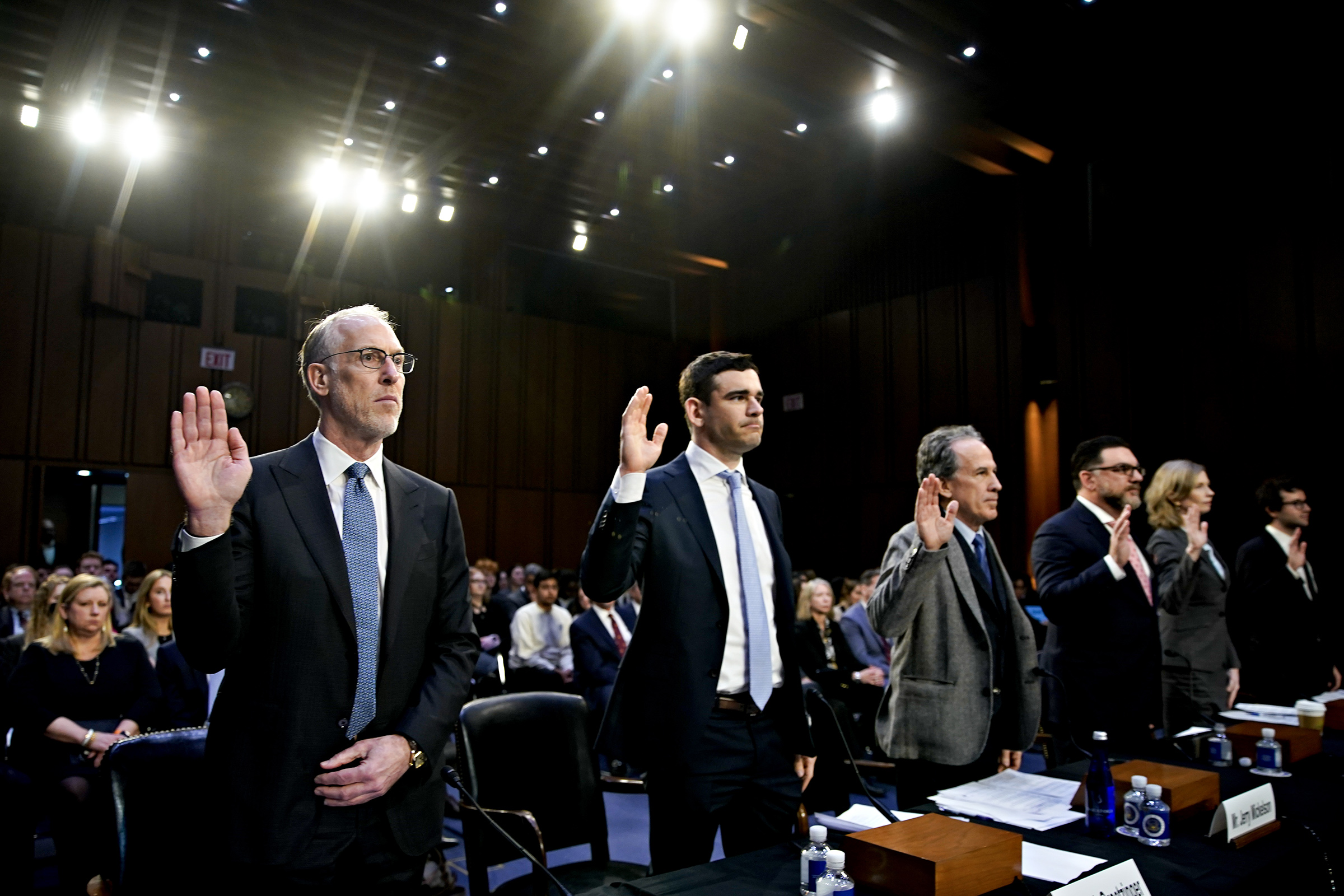
“I knew this tour was harder than anything I’d ever done before by a long shot,” Swift says. Each show spans over 180 minutes, including 40-plus songs from at least nine albums; there are 16 costume changes, pyrotechnics, an optical illusion in which she appears to dive into the stage and swim, and not one but two cottagecore worlds, which feature an abundance of moss.
In the past, Swift jokes, she toured “like a frat guy.” This time, she began training six months ahead of the first show. “Every day I would run on the treadmill, singing the entire set list out loud,” she said. “Fast for fast songs, and a jog or a fast walk for slow songs.” Her gym, Dogpound, created a program for her, incorporating strength, conditioning, and weights. “Then I had three months of dance training, because I wanted to get it in my bones,” she says. “I wanted to be so over-rehearsed that I could be silly with the fans, and not lose my train of thought.” She worked with choreographer Mandy Moore—recommended by her friend Emma Stone, who worked with Moore on La La Land—since, as Swift says, “Learning choreography is not my strong suit.” With the exception of Grammy night—which was “hilarious,” she says—she also stopped drinking. “Doing that show with a hangover,” she says ominously. “I don’t want to know that world.”
Read More: Taylor Swift Shares Her Eras Tour Workout and Self-Care Regimen
Swift’s arrival in a city energized the local economy. When Eras kicked off in Glendale, Ariz., she generated more revenue for its businesses than the 2023 Super Bowl, which was held in the same stadium. Fans flew across the country, stayed in hotels, ate meals out, and splurged on everything from sweatshirts to limited-edition vinyl, with the average Eras attendee reportedly spending nearly $1,300. Swift sees the expense and effort incurred by fans as something she needs to repay: “They had to work really hard to get the tickets,” she says. “I wanted to play a show that was longer than they ever thought it would be, because that makes me feel good leaving the stadium.” The “Taylor effect” was noticed at the highest levels of government. “When the Federal Reserve mentions you as the reason economic growth is up, that’s a big deal,” says Ed Tiryakian, a finance professor at Duke University.
Carrying an economy on your back is a lot for one person. After she plays a run of shows, Swift takes a day to rest and recover. “I do not leave my bed except to get food and take it back to my bed and eat it there,” she says. “It’s a dream scenario. I can barely speak because I’ve been singing for three shows straight. Every time I take a step my feet go crunch, crunch, crunch from dancing in heels.” Maintaining her strength through workouts between shows is key. “I know I’m going on that stage whether I’m sick, injured, heartbroken, uncomfortable, or stressed,” she says. “That’s part of my identity as a human being now. If someone buys a ticket to my show, I’m going to play it unless we have some sort of force majeure.” (A heat wave in Rio de Janeiro caused chaos during Swift’s November run as one fan, Ana Clara Benevides Machado, reportedly collapsed during the show and later died; Swift wrote on Instagram that she had a “shattered heart.” She rescheduled the next show because of unsafe conditions, and spent time with Benevides Machado’s family at her final tour date in Brazil.)
